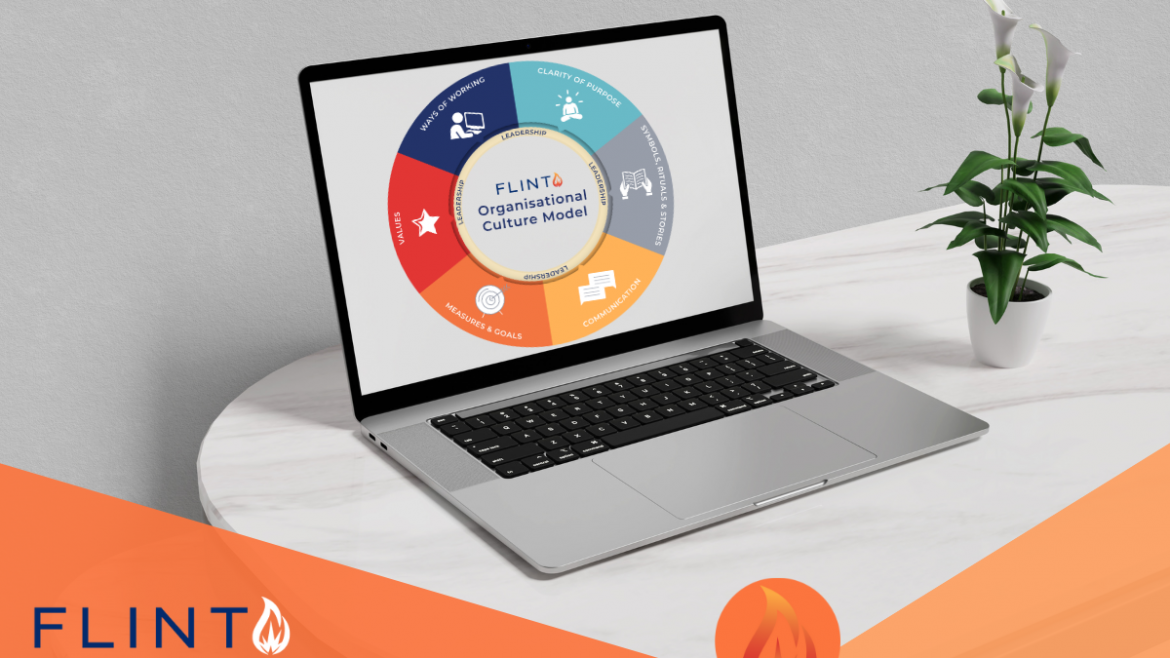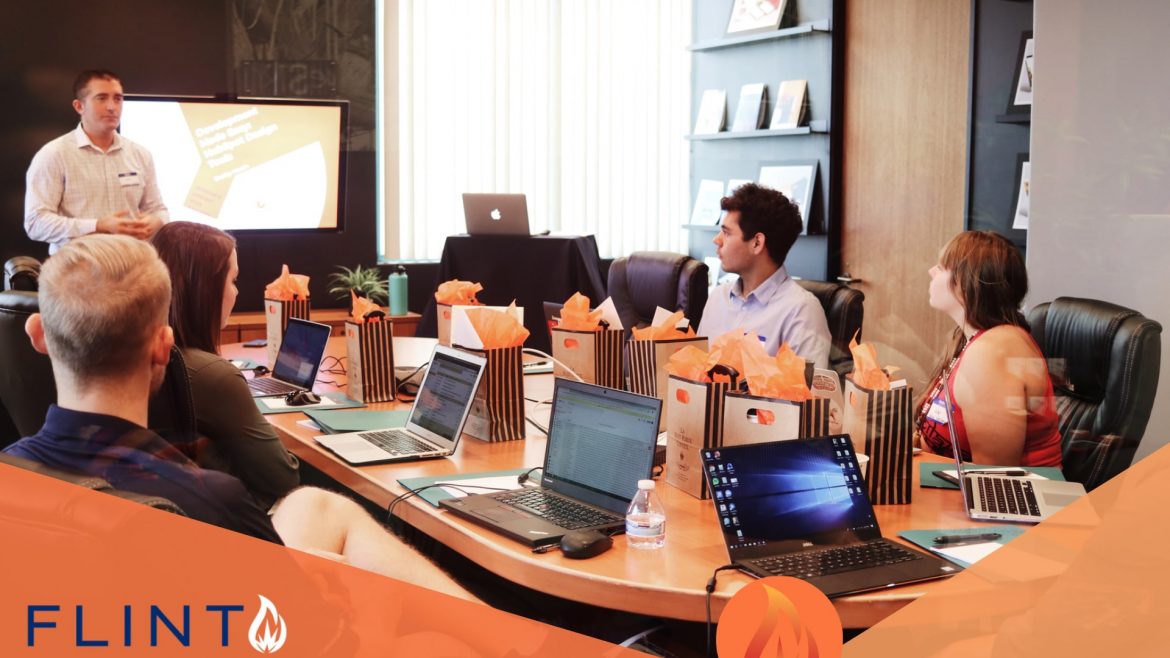Culture can be defined simply as “the way that things are done around here”. It is the intangible and often the unique accumulation of elements that combine to make it either a positive or negative factor in an organisation’s performance.
Why does culture matter?
The ramifications of organisational cultures, positive and negative, on both your people and the performance of your business, are significant. Recent research shows that public companies with healthy cultures are 1.5 times more likely to experience revenue growth!
Productivity, creativity and innovation are all impacted, as well as staff turnover, satisfaction and engagement. It’s therefore not something that can just be left to chance. The good news is that culture is something that can be changed – the first step is to understand the drivers within the organisation.
What are the elements that make up culture?
At Flint Change, we have developed a model* of the core elements that make up an organisation’s culture.
Culture is something that is both created by and has an impact on, all areas of an organisation. It is therefore something that needs to be considered and understood holistically, not viewed in isolation, and certainly not as being a problem to be fixed by the HR team.
In this blog, we pick a few elements of the model to illustrate ways that you can positively impact your culture. We’d be delighted to talk to you in more detail about the other elements in a discovery call.
Clarity of purpose
Strategy can seem complex or remote for some employees. The key is to simplify it and involve them; it will empower them to deliver it. When Executive teams create strategies they look forward, focussing on the big picture, but they don’t necessarily have the skills or knowledge to determine how that strategy should be implemented at a really granular level of detail.
We suggest spending time with people at all levels of the organisation to ask “How should we deliver this?” Other questions to ask yourself:
- Do you have a clear strategy?
- Is it widely known and understood?
- Does it reflect the reality of what people are working on?
Symbols, rituals and stories
Rituals can help you boost culture by turning small, everyday behaviours into more symbolic acts, adding meaning and joy to people’s jobs and setting you apart with fun practices, creating a shared identity and building an emotional connection. Ask yourselves:
- What role do environment, branding and rituals play within your organisation?
- Do they reflect and reinforce the values of your organisation?
- Do these set you apart?
Communication
There’s an old adage that you have to tell someone something 7 times before they can hear it. Anecdotal may be, but it highlights the need to communicate your key messages as many times as you can, in as many different ways as possible. We use one-page visual ‘compelling strategic narratives’ accompanied by plans for every department and ultimately every individual. The same strategic messages need to continue to be reinforced. Consider –
- What methods of communication exist within your organisation?
- Are these one-way (topdown) or are front-line people able to communicate through the hierarchy up to the leadership team?
- What barriers to communication exist?
Flint Tips
- Understand what will have a big impact. What small changes will make a difference to your people and make them understand that you are serious about making this culture be lived out?
- You can influence culture with clear, purposeful interventions. These do not have to be high-cost or radical, just small changes that make it very clear.
- You do need to have constant energy to reinforce culture. Diarise now to ensure that energy is kept up. Use people around you who are excited and passionate about this
- Embrace the nay-sayers where you can. Get them on side. If your ongoing effort isn’t rewarded, you may need to change the people, or provide some radical candour!
- Use all elements of the employee lifecycle to reinforce the culture, values and behaviours.
- You might find our blog on creating engaging rituals will help you too.
You can use either interviews, focus groups or surveys to gather insight into where your organisational culture is currently. It may be worth considering using independent and impartial facilitators to ensure that people feel able, to be honest.
*The Flint Change Culture Model was developed from ‘The Culture Web’, Johnson et al,2008
Book a call with our founder Alex Walker to find out more about how we use our culture model in our Ignite Change Audit.






